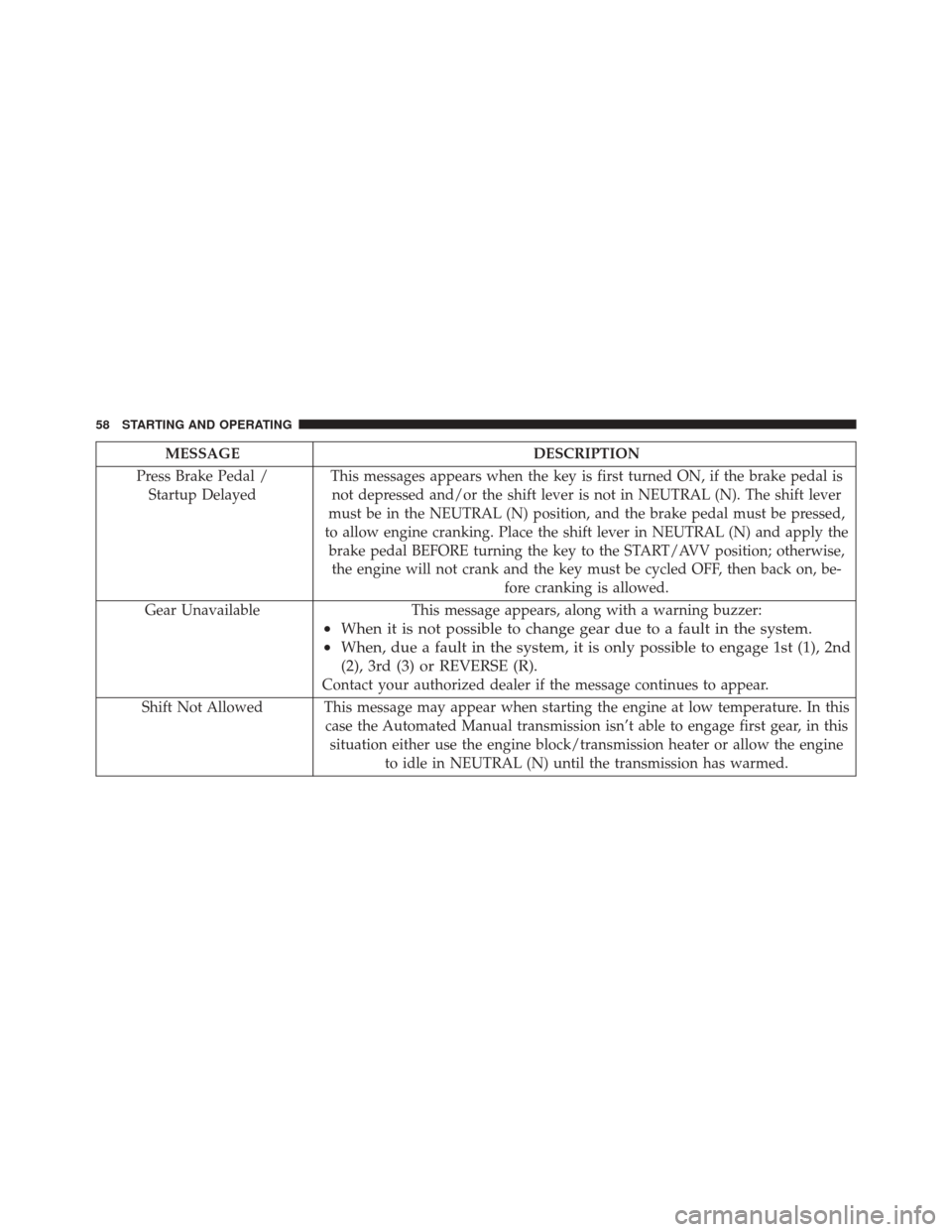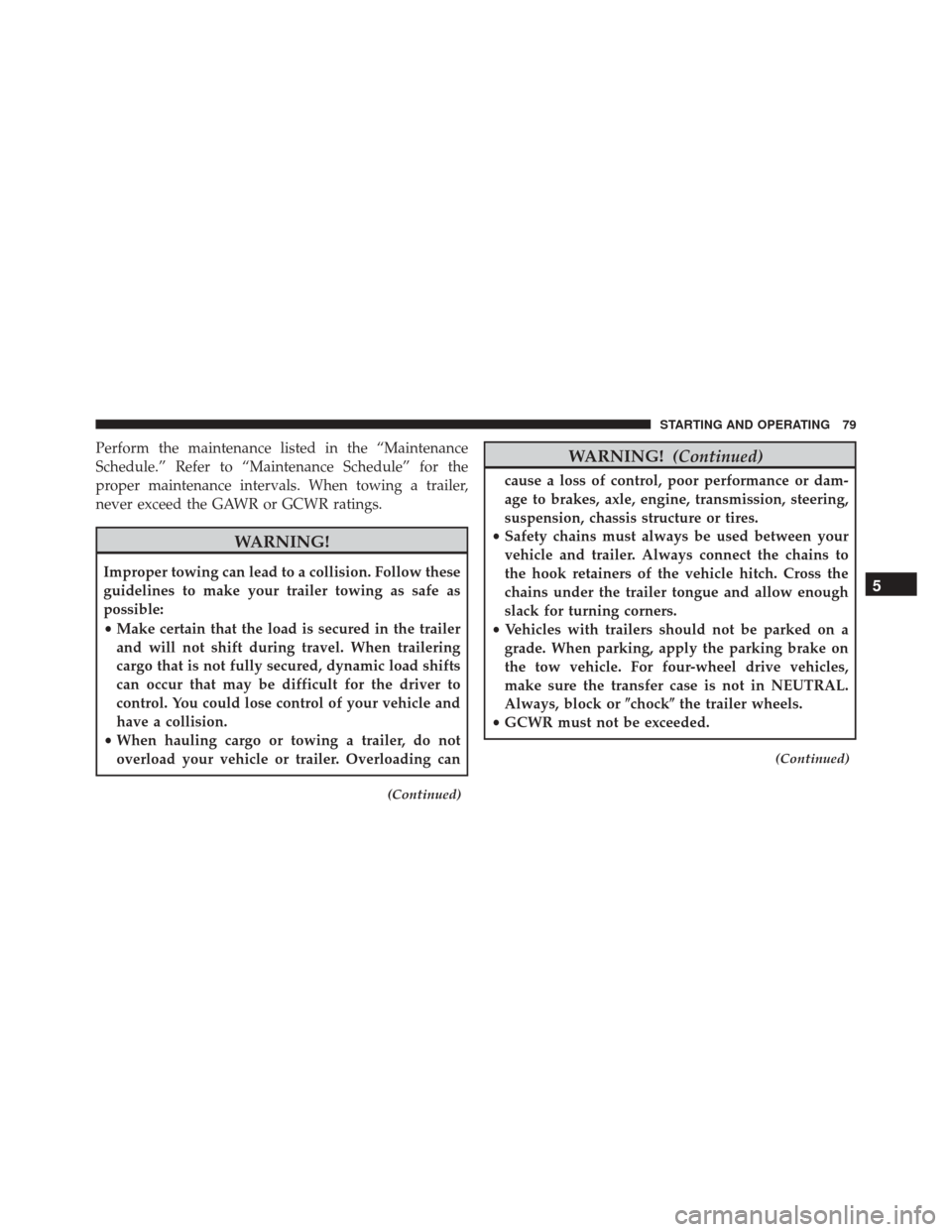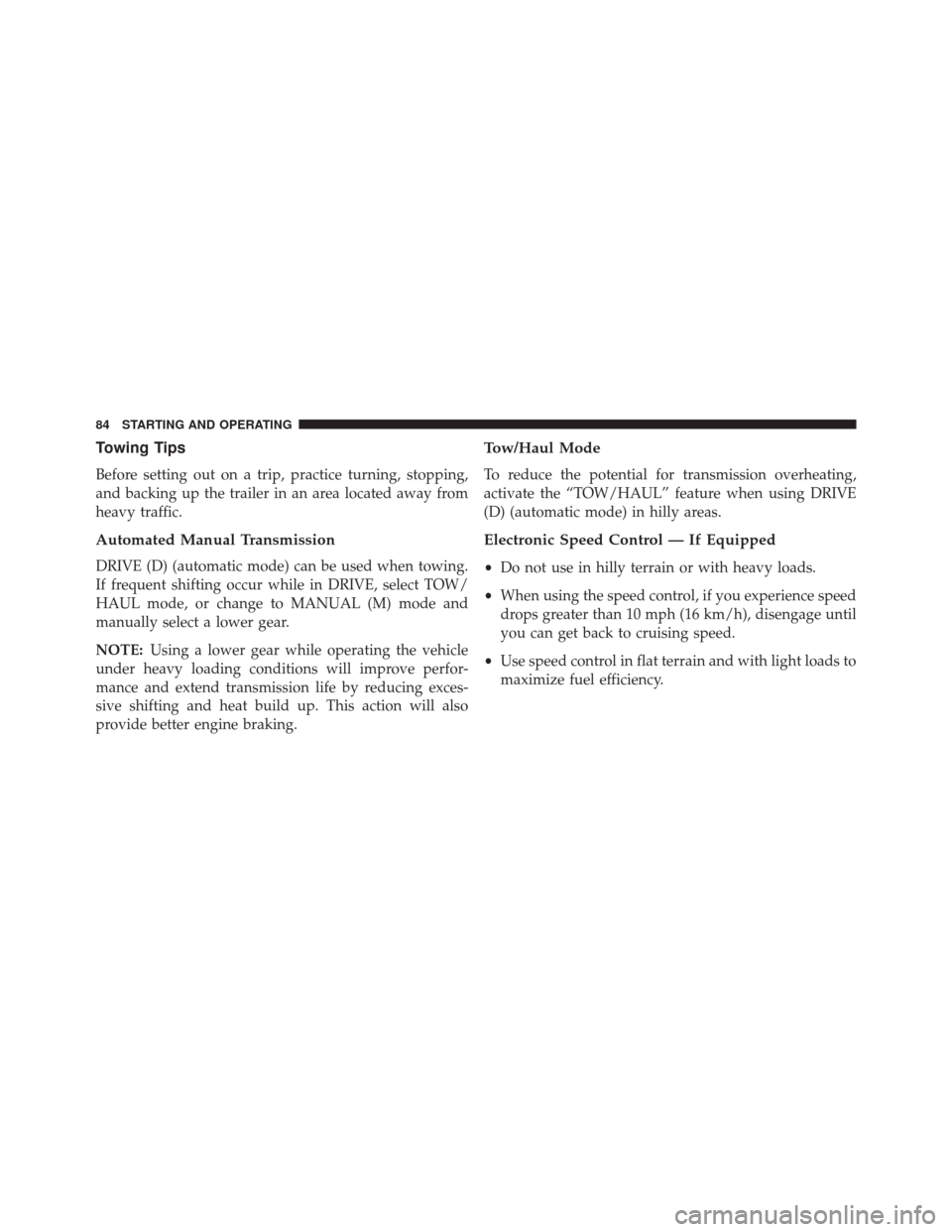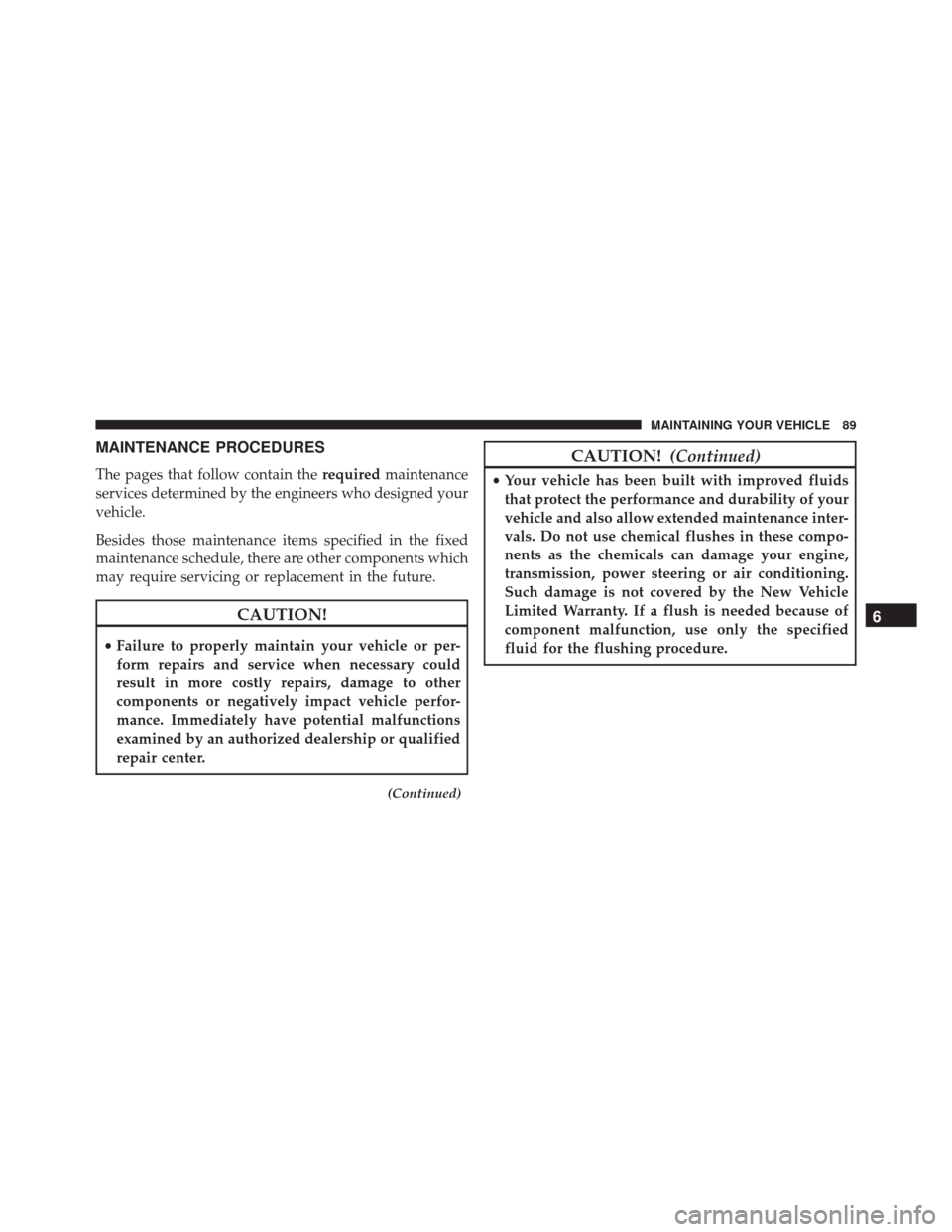Page 60 of 130

MESSAGEDESCRIPTION
Press Brake Pedal / Startup Delayed This messages appears when the key is first turned ON, if the brake pedal is
not depressed and/or the shift lever is not in NEUTRAL (N). The shift lever
must be in the NEUTRAL (N) position, and the brake pedal must be pressed,
to allow engine cranking. Place the shift lever in NEUTRAL (N) and apply the brake pedal BEFORE turning the key to the START/AVV position; otherwise,the engine will not crank and the key must be cycled OFF, then back on, be- fore cranking is allowed.
Gear Unavailable This message appears, along with a warning buzzer:
•When it is not possible to change gear due to a fault in the system.
• When, due a fault in the system, it is only possible to engage 1st (1), 2nd
(2), 3rd (3) or REVERSE (R).
Contact your authorized dealer if the message continues to appear.
Shift Not Allowed This message may appear when starting the engine at low temperature. In this case the Automated Manual transmission isn’t able to engage first gear, in thissituation either use the engine block/transmission heater or allow the engine to idle in NEUTRAL (N) until the transmission has warmed.
58 STARTING AND OPERATING
Page 61 of 130

MESSAGEDESCRIPTION
Press Brake And Try Again This message appears accompanied, in some cases, by a warning buzzer, if you attempt to change gear with the vehicle parked without pressing thebrake pedal.
To shift the transmission (with key on/engine off), press and hold the brake
pedal, move the shift lever to NEUTRAL (N), then move the shift lever to the desired position.
Shift To Neutral This message appears, together with a warning buzzer, when the shift lever
must be moved to the NEUTRAL (N) position.
When the shift lever is moved to NEUTRAL (N) the message on the display should go off.
Contact your authorized dealer if the message continues to appear.
Press Brake Pedal This message is shown in the display together with an acoustic signal, when the brake pedal is not pressed during a starting attempt.
Press Brake Shift to N key to start This message appears, after the door opening, to remind to Press the Brake
pedal and shift the lever in N to permit the cranking.
5
STARTING AND OPERATING 59
Page 62 of 130

Towing The Vehicle
•The manufacturer recommends towing your vehicle
with all four wheels OFFthe ground using a flatbed.
• Automated Manual transmission vehicles can also be
flat towed (all four wheels on the ground) with the
transmission in NEUTRAL. Ensure the transmission is
in NEUTRAL (N) (by checking that the vehicle moves
when pushed) and tow in the same way as a normal
vehicle with a manual transmission.
CAUTION!
• DO NOT flat tow any disabled vehicle if condition
is related to the clutch, transmission or driveline.
Additional damage to the drivetrain could result.
• Towing this vehicle in violation of the above re-
quirements can cause severe engine, transmission,
(Continued)
CAUTION! (Continued)
or drivetrain damage. Damage from improper tow-
ing is not covered under the New Vehicle Limited
Warranty.
If it is not possible to shift the transmission to NEUTRAL
(N), do not flat tow the vehicle and contact your autho-
rized dealer.
FUEL REQUIREMENTS
Use good quality diesel fuel from a reputable supplier in
your vehicle. Federal law requires that you must fuel this
vehicle with Ultra Low Sulfur Highway Diesel fuel
(15 ppm Sulfur maximum) and prohibits the use of Low
Sulfur Highway Diesel fuel (500 ppm Sulfur maximum)
to avoid damage to the emissions control system.
60 STARTING AND OPERATING
Page 81 of 130

Perform the maintenance listed in the “Maintenance
Schedule.” Refer to “Maintenance Schedule” for the
proper maintenance intervals. When towing a trailer,
never exceed the GAWR or GCWR ratings.
WARNING!
Improper towing can lead to a collision. Follow these
guidelines to make your trailer towing as safe as
possible:
•Make certain that the load is secured in the trailer
and will not shift during travel. When trailering
cargo that is not fully secured, dynamic load shifts
can occur that may be difficult for the driver to
control. You could lose control of your vehicle and
have a collision.
• When hauling cargo or towing a trailer, do not
overload your vehicle or trailer. Overloading can
(Continued)
WARNING! (Continued)
cause a loss of control, poor performance or dam-
age to brakes, axle, engine, transmission, steering,
suspension, chassis structure or tires.
• Safety chains must always be used between your
vehicle and trailer. Always connect the chains to
the hook retainers of the vehicle hitch. Cross the
chains under the trailer tongue and allow enough
slack for turning corners.
• Vehicles with trailers should not be parked on a
grade. When parking, apply the parking brake on
the tow vehicle. For four-wheel drive vehicles,
make sure the transfer case is not in NEUTRAL.
Always, block or �chock�the trailer wheels.
• GCWR must not be exceeded.
(Continued)
5
STARTING AND OPERATING 79
Page 86 of 130

Towing Tips
Before setting out on a trip, practice turning, stopping,
and backing up the trailer in an area located away from
heavy traffic.
Automated Manual Transmission
DRIVE (D) (automatic mode) can be used when towing.
If frequent shifting occur while in DRIVE, select TOW/
HAUL mode, or change to MANUAL (M) mode and
manually select a lower gear.
NOTE:Using a lower gear while operating the vehicle
under heavy loading conditions will improve perfor-
mance and extend transmission life by reducing exces-
sive shifting and heat build up. This action will also
provide better engine braking.
Tow/Haul Mode
To reduce the potential for transmission overheating,
activate the “TOW/HAUL” feature when using DRIVE
(D) (automatic mode) in hilly areas.
Electronic Speed Control — If Equipped
• Do not use in hilly terrain or with heavy loads.
• When using the speed control, if you experience speed
drops greater than 10 mph (16 km/h), disengage until
you can get back to cruising speed.
• Use speed control in flat terrain and with light loads to
maximize fuel efficiency.
84 STARTING AND OPERATING
Page 87 of 130
Cooling System
To reduce potential for engine and transmission over-
heating, take the following actions:
City Driving
When stopped for short periods, shift the transmission
into NEUTRAL and increase engine idle speed.Highway Driving
Reduce speed.
Air Conditioning
Turn off temporarily.
5
STARTING AND OPERATING 85
Page 89 of 130
MAINTAINING YOUR VEHICLE
CONTENTS
�ENGINE COMPARTMENT — 3.0L DIESEL .....88
� MAINTENANCE PROCEDURES ............89
▫ Engine Oil ...........................90
▫ Engine Air Cleaner Filter ................92
▫ Draining Fuel Filter/Water Separator ........93
▫ Fuel Filter Replacement ..................94
▫ Priming If The Engine Has Run Out Of Fuel . . .94
▫ Intervention Regeneration Strategy — Message
Process Flow .........................96 ▫
Maintenance-Free Batteries ...............96
▫ Cooling System .......................97
▫ Brake System ....................... .103
▫ Automated Manual Transmission ..........104
� FLUID CAPACITIES ....................105
�
FLUIDS, LUBRICANTS AND GENUINE PARTS . . .106
▫ Engine ............................ .106
▫ Chassis ........................... .109
6
Page 91 of 130

MAINTENANCE PROCEDURES
The pages that follow contain therequiredmaintenance
services determined by the engineers who designed your
vehicle.
Besides those maintenance items specified in the fixed
maintenance schedule, there are other components which
may require servicing or replacement in the future.
CAUTION!
• Failure to properly maintain your vehicle or per-
form repairs and service when necessary could
result in more costly repairs, damage to other
components or negatively impact vehicle perfor-
mance. Immediately have potential malfunctions
examined by an authorized dealership or qualified
repair center.
(Continued)
CAUTION! (Continued)
•Your vehicle has been built with improved fluids
that protect the performance and durability of your
vehicle and also allow extended maintenance inter-
vals. Do not use chemical flushes in these compo-
nents as the chemicals can damage your engine,
transmission, power steering or air conditioning.
Such damage is not covered by the New Vehicle
Limited Warranty. If a flush is needed because of
component malfunction, use only the specified
fluid for the flushing procedure.
6
MAINTAINING YOUR VEHICLE 89